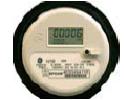Knowledge fuels change
For over a decade, Energypedia has shared free, reliable energy expertise with the world.
We’re now facing a serious funding gap.
Help keep this platform alive — your donation, big or small, truly matters!
Thank you for your support
Difference between revisions of "Metering and Billing Systems"
From energypedia
***** (***** | *****) |
***** (***** | *****) |
||
| Line 1: | Line 1: | ||
= Standard kWh meter = | = Standard kWh meter = | ||
| − | [[Image:Standard kWh meter.jpg|thumb|Standard kWh meter. Its price is about 40-50 USD]] | + | [[Image:Standard kWh meter.jpg|thumb|Standard kWh meter. Its price is about 40-50 USD]] [[Image:Digital meter.jpg|thumb|Digital meter. Its price is about 120-150 USD]] |
| − | |||
| − | [[Image:Digital meter.jpg|thumb|Digital meter. Its price is about 120-150 USD]] | ||
<u>Advantages</u> | <u>Advantages</u> | ||
| Line 11: | Line 9: | ||
*amount and time related tariffs possible (demand steering) | *amount and time related tariffs possible (demand steering) | ||
| − | <u>Disadvantages</u> | + | <u>Disadvantages</u> |
*high costs (metering device & reading) | *high costs (metering device & reading) | ||
*dis- and re-connection in case of late payment | *dis- and re-connection in case of late payment | ||
*complicated reading and billing | *complicated reading and billing | ||
Revision as of 14:40, 6 June 2009
Standard kWh meter
Advantages
- fair and transparent
- reading less frequent than collection; if customers go to office, there is cost reduction
- amount and time related tariffs possible (demand steering)
Disadvantages
- high costs (metering device & reading)
- dis- and re-connection in case of late payment
- complicated reading and billing





















